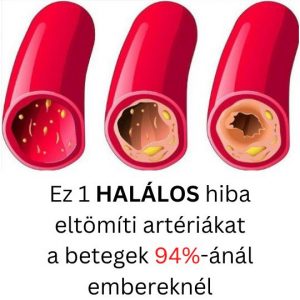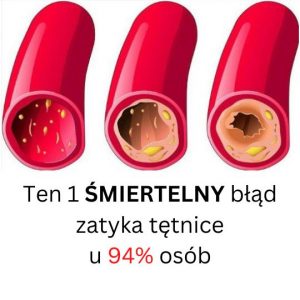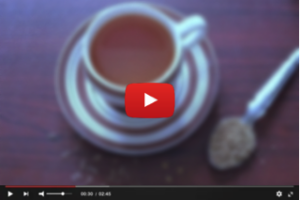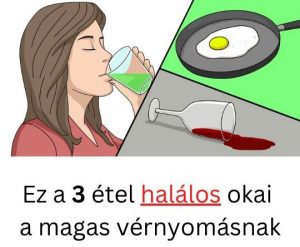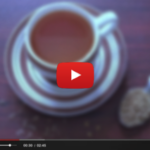The #1 Rated Blood Sugar Formula
The Silent Signs of Ocular Hypertension: Understanding the Symptoms
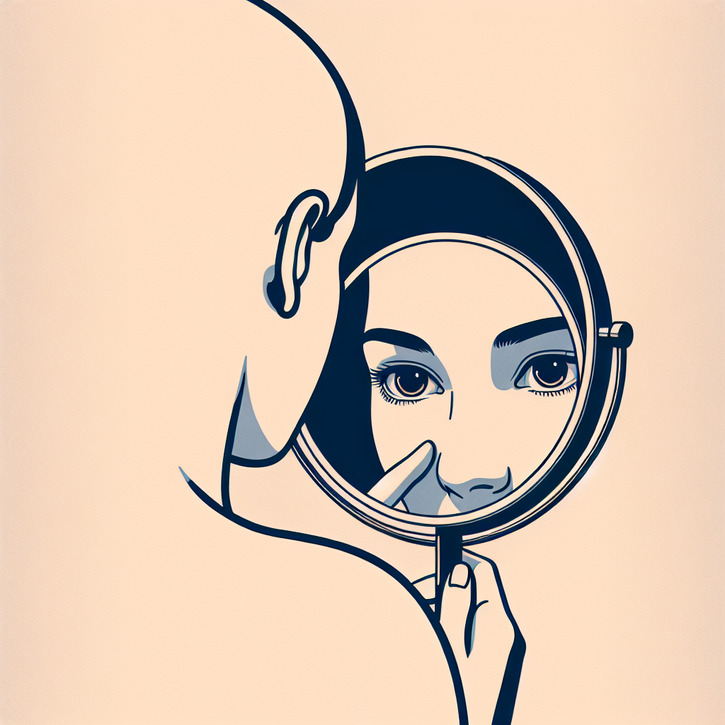
Understanding Ocular Hypertension: A Closer Look
Have you ever heard of ocular hypertension? It's a condition that affects millions worldwide, yet many people have no idea they're dealing with it. Often called "high eye pressure," it happens when the fluid inside your eyes doesn't drain properly, causing pressure to build up. While it might not always show symptoms, ignoring it can lead to serious vision problems down the line. Let's break down what you need to know about this silent condition and how early detection can save your sight.
What Exactly Is Ocular Hypertension?
Your eyes have a natural fluid called aqueous humor that helps maintain their shape and keep everything running smoothly. In a healthy eye, this fluid flows in and out at the same rate. But with ocular hypertension, the drainage system gets a bit sluggish, causing pressure to rise inside your eye. This increased intraocular pressure (IOP) can eventually harm your optic nerve, leading to vision loss if not addressed.
Ocular Hypertension vs. Glaucoma: What's the Difference?
While they're often lumped together, ocular hypertension and glaucoma aren't the same thing. Ocular hypertension is all about elevated eye pressure, whereas glaucoma involves actual damage to the optic nerve—something that can happen if high IOP isn't managed properly. Not everyone with ocular hypertension will develop glaucoma, but it does put you at higher risk. Regular check-ups are key to catching any early signs and preventing irreversible damage.
Why Early Detection Is a Game-Changer
Here's the kicker: ocular hypertension is a sneaky condition that often doesn't announce itself with obvious symptoms. By the time people notice something's off, like blurred vision or eye pain, lasting damage might already be done. That's why routine eye exams are your best bet for catching it early. Think of them as a proactive way to protect your vision before things get serious.
Spotting the Signs: Common Symptoms to Watch For
Blurred Vision: A Red Flag?
If you've noticed your vision getting fuzzy, it could be a sign of ocular hypertension. The increased pressure can distort your cornea, messing with how light focuses on your retina. This blurring might come and go or get worse over time. If you're suddenly struggling to switch between near and far objects, it's worth getting your eyes checked.
Eye Pain: More Than Just Tiredness
Ever feel a dull ache or throbbing in your eyes, especially after reading or staring at screens? That could be related to high eye pressure. This discomfort might also come with redness or sensitivity to light. If you're experiencing persistent pain, don't brush it off—your eyes are trying to tell you something.
Seeing Halos Around Lights
Those rainbow-colored rings around streetlights or car headlights? They could be more than just a pretty sight. Halos are another potential symptom of ocular hypertension. You might notice them more in low-light conditions, like when driving at night. While they can also be caused by other issues, it's always better to err on the side of caution and schedule an eye exam.
Other Subtle Warning Signs
Beyond the obvious symptoms, ocular hypertension can show up in less direct ways. Headaches when reading or working on the computer? Difficulty focusing or a general sense of eye fatigue? These could all be early clues that something's not quite right. Pay attention to these small signals—they might be your body's way of sounding an alarm.
Stealth Symptoms: The Ones You Might Miss
Gradual Loss of Peripheral Vision
One of the scariest things about ocular hypertension is how it quietly chips away at your peripheral vision. This loss happens so slowly that your brain often fills in the blanks, making it hard to notice until significant damage has been done. Regular eye exams can help catch these changes early and prevent them from becoming a major issue.
Struggling in Low Light
Trouble seeing when driving at night or moving from bright to dimly lit areas? This difficulty adjusting to darkness, known as nyctalopia, could be linked to ocular hypertension. While it's easy to write this off as just part of aging, it's worth looking into—especially if you're experiencing other symptoms.
Constant Changes in Your Eyewear Prescription
If you're constantly updating your glasses or contacts prescription, ocular hypertension might be the culprit. The pressure inside your eyes can alter their shape over time, affecting how light focuses on your retina. While some changes are normal as we age, frequent adjustments could signal an underlying issue that needs attention.
Why These Symptoms Are Easy to Overlook
Let's face it: these symptoms can be pretty subtle and easy to ignore. The gradual loss of peripheral vision might not register until someone points out you're missing parts of your surroundings. Difficulty adjusting to darkness? That's an "I just need new glasses" kind of problem, right? This is exactly why regular eye exams are crucial—they give your doctor a chance to spot these changes before they become major problems.
Why Ocular Hypertension Symptoms Are So Hard to Catch
The Silent Nature of Asymptomatic Cases
Here's the kicker: many people with ocular hypertension don't experience any symptoms at all. Known as asymptomatic cases, these individuals might have elevated eye pressure without even noticing a change in their vision or comfort. While that sounds like good news, it's actually pretty dangerous because the damage to your optic nerve can still happen silently over time. Without regular check-ups, these cases often go undiagnosed until significant harm has been done.
How Age and Other Factors Play a Role
Your age and overall health can also influence how symptoms present themselves. For example, older adults might experience vision changes due to other age-related conditions like cataracts or macular degeneration. Plus, certain medical issues—like diabetes or high blood pressure—can increase your risk of developing ocular hypertension and complicate its symptom presentation. This is why it's so important to discuss all aspects of your health with your eye care provider—they need the full picture to give you the best care possible.
Why Regular Eye Exams Are Your Best Defense
Given how easily these symptoms can slip under the radar, regular eye exams are your number one defense against ocular hypertension. Even if you don't notice any changes in your vision or experience discomfort, routine check-ups allow your doctor to measure your intraocular pressure and monitor for early signs of optic nerve damage. The American Optometric Association recommends a comprehensive exam every one to two years, depending on your age and risk factors. Don't skip these appointments—they could be the key to preserving your vision for years to come.
When Should You Seek Medical Attention?
Spotting Red Flags Early
If you notice any of these symptoms—blurred vision, eye pain, halos around lights, difficulty adjusting to darkness—it's time to see your eye doctor. These could be early warning signs of ocular hypertension or another underlying condition that needs treatment. The sooner you seek care, the better your chances of preventing further damage and preserving your vision.
What to Do If You Suspect Ocular Hypertension
If you're experiencing symptoms that make you think you might have ocular hypertension, don't wait—schedule an appointment with your eye doctor as soon as possible. They'll perform a comprehensive exam, including measuring your intraocular pressure and checking the health of your optic nerve. Depending on what they find, they may recommend lifestyle changes, monitoring, or treatment options to manage the condition effectively.
How Family History Influences Your Risk
Your family history also plays a role in your risk for ocular hypertension and glaucoma. If close relatives have been diagnosed with these conditions, you might be more likely to develop them too. Be sure to share any relevant medical history with your eye care provider so they can monitor you more closely and recommend appropriate preventive measures.
Managing and Preventing Ocular Hypertension
Making Lifestyle Changes That Make a Difference
Lifestyle adjustments can go a long way in managing ocular hypertension and reducing your risk of complications. Maintaining a healthy weight through diet and exercise, avoiding smoking, limiting alcohol consumption—these all contribute to better eye health. Protecting your eyes from injury and finding healthy ways to manage stress are also important steps you can take to support your overall well-being and mitigate the effects of elevated eye pressure.
The Importance of Regular Monitoring
Why Keeping Tabs on Your Eye Health Matters
Even if you don't currently have any symptoms, regular monitoring is crucial for anyone at risk of ocular hypertension. This includes individuals with a family history of glaucoma or those who've been diagnosed with high eye pressure in the past. By keeping an eye on your intraocular pressure and optic nerve health, your doctor can catch early signs of progression and implement treatment as needed. Remember, early detection is key to preventing complications down the line.
Exploring Treatment Options for Early Detection
If ocular hypertension is detected early, there are several effective treatment options available. Eye drops are a common first-line treatment—these work by either increasing the outflow of aqueous humor or decreasing its production to lower intraocular pressure. In some cases, laser therapy or surgical procedures may be recommended to improve drainage and reduce eye pressure further. The goal of these treatments is clear: prevent optic nerve damage and preserve your vision for as long as possible.
Conclusion: Understanding the Silent Signs of Ocular Hypertension
A Quick Reminder of Key Symptoms to Watch For
Ocular hypertension is a silent condition that often goes unnoticed until significant damage has occurred. By being aware of potential signs like blurred vision, eye pain, halos around lights, and difficulty adjusting to darkness, you can take proactive steps to protect your vision. Remember, early detection is crucial in preventing complications and preserving your sight.
Encouraging a Proactive Approach to Eye Health
Your eyes are one of your most valuable assets—so prioritize their health! This means scheduling regular eye exams, maintaining a healthy lifestyle, and staying vigilant about any changes in your vision or comfort. By taking these steps, you can reduce your risk of ocular hypertension and other sight-threatening conditions while ensuring that you continue to enjoy clear, vibrant vision for years to come.
Final Thoughts on Early Detection and Prevention
The silent signs of ocular hypertension may be hard to detect on your own, but with the help of a skilled eye care professional, you can stay ahead of this condition. Regular monitoring and early intervention are your best tools for managing ocular hypertension and preventing its progression into glaucoma. Don't wait until symptoms become severe—take charge of your eye health today and safeguard your vision for tomorrow.
Understanding Ocular Hypertension: An Overview
Ocular hypertension, often called "high eye pressure," affects millions but is frequently overlooked. It happens when the fluid pressure in your eyes rises above normal levels. While it may not always show symptoms, ignoring it can lead to serious vision issues. Let's dive into its silent signs and how early detection can save your sight.
What Is Ocular Hypertension?
Your eyes produce a clear fluid called aqueous humor, which maintains their shape and nourishes essential structures like the cornea and lens. In a healthy eye, this fluid drains as quickly as it's produced. However, in ocular hypertension, the drainage system falters, causing pressure buildup that can damage the optic nerve over time.
Glaucoma vs. Ocular Hypertension
Ocular hypertension isn't glaucoma. Glaucoma involves optic nerve damage, often from untreated high eye pressure. Not everyone with ocular hypertension will develop glaucoma, but it increases the risk. Regular check-ups are vital to catch early signs and prevent vision loss.
Why Early Detection Matters
Ocular hypertension is sneaky—many don't notice symptoms until significant damage occurs. By then, blurred vision or eye pain may have already caused permanent optic nerve harm. Regular comprehensive eye exams are your first line of defense. Early diagnosis means timely action to protect your vision.
Common Symptoms of Ocular Hypertension
Blurred Vision: A Possible Sign
Blurred vision is a frequent symptom. Increased eye pressure can distort the cornea, affecting how light focuses on the retina. If you notice sudden changes in clarity, especially when switching between near and far objects, consult an eye care professional.
Eye Pain or Discomfort
Elevated pressure can cause discomfort, like a dull ache or throbbing, worsening with tiredness or sustained focus. It may come with redness or light sensitivity. Persistent pain shouldn't be ignored—it might signal an underlying issue needing medical attention.
Seeing Halos Around Lights
Halos around lights are another symptom—colored rings or fuzzy circles around bright sources, especially in low-light conditions. While halos can result from other issues like cataracts, they warrant an eye exam.
Other Subtle Signs
Some experience frequent headaches during reading or computer work. Others notice difficulty focusing or eye fatigue beyond what's explained by screen time or sleep deprivation. These symptoms may seem unrelated but could indicate elevated eye pressure.
Silent Symptoms Often Overlooked
Gradual Loss of Peripheral Vision
Ocular hypertension can stealthily steal peripheral vision, going unnoticed as the brain adapts. By the time it's noticed, significant side vision loss may have occurred. Regular exams detect these changes early.
Trouble Adjusting to Darkness
Difficulty seeing in low light, known as nyctalopia, can signal ocular hypertension. If you find yourself squinting more at night or moving from bright to dim areas, schedule an eye exam.
Frequent Eyewear Changes
Constant updates to glasses or contacts could indicate shape changes in the eyes due to pressure increases. While vision changes are common with age, frequent adjustments might signal an underlying issue needing medical attention.
How Symptoms Can Go Unnoticed
Ocular hypertension symptoms develop gradually, adapting unnoticed until significant damage occurs. The loss of peripheral vision may go undetected until someone points out missing surroundings. Difficulty adjusting to darkness is often dismissed as aging. Routine exams catch these changes early.
Why Ocular Hypertension Symptoms Are Hard to Detect
Asymptomatic Cases
Many experience no symptoms, known as asymptomatic cases. While this might seem harmless, it's dangerous because silent

Maja Kowalczyk is a health enthusiast and has been interested in healthy and natural methods of regulating blood pressure for many years.


